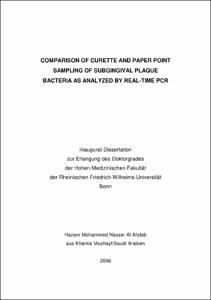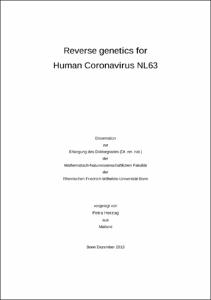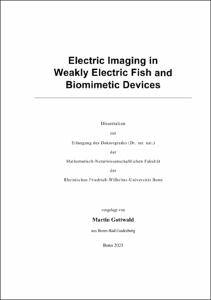Comparison of curette and paper point sampling of subgingival plaque bacteria as analyzed by real-time PCR

Comparison of curette and paper point sampling of subgingival plaque bacteria as analyzed by real-time PCR

| dc.contributor.advisor | Jepsen, Søren | |
| dc.contributor.author | Al Ahdab, Hazem Mohammed Nasser | |
| dc.date.accessioned | 2020-04-08T10:23:13Z | |
| dc.date.available | 2020-04-08T10:23:13Z | |
| dc.date.issued | 2006 | |
| dc.identifier.uri | https://hdl.handle.net/20.500.11811/2421 | |
| dc.description.abstract | Because of their important etiological role in periodontitis the microbiological identification of subgingival plaque bacteria is essential for clinical diagnostics. However, only few studies have systematically evaluated microbiological sampling methods of periodontal bacteria. The present study has been conducted to compare for the first time two widely used sampling techniques (paper point and curette) using the novel method of quantitative real-time PCR. Twenty adult patients with chronic periodontitis participated in a prospective study using a cross-over design. In each patient one periodontal pocket with a probing depth of more than 6 mm was selected for microbial sampling. In patients of group A the first sample was obtained with a paper point and the second with a Gracey-curette. In group B the sampling sequence was reversed. Samples were analysed by a blinded examiner in a specialised microbiological laboratory using real-time PCR technology. The analysis enabled the quantitative evaluation of Actinobacillus actinomycetemcomitans, Fusobacterium nucleatum ssp., Porphyromonas gingivalis, Prevotella intermedia, Treponema denticola, Tannerella forsythia as well as total bacterial counts. Eight weeks after anti-infective periodontal therapy the sites were sampled again, using the same sampling sequence as before. Statistical analysis included t-test, Kappa and Spearman correlation. In this study higher total bacterial counts could be harvested by use of curettes than by paper points. The ratios between paper point and curette samples in group A were 1:4 before and 1:1 after therapy, in group B the respective values were 1:4 before and 1:3 after therapy. In contrast, the relative proportions of target bacteria in the total sample were similar. Following therapy, both sampling techniques showed a reduction of total bacterial counts as well as of the relative proportion of periodontopathogens. Overall, there was a relatively good agreement for the results of the investigated sampling techniques for the analysis of subgingival plaque bacteria. Thus, both techniques appear to well suited for microbiological diagnostics of patients with periodontitis. | en |
| dc.description.abstract | Evaluation mikrobiologischer Entnahmetechniken subgingivaler Plaque-Bakterien mittels Real-Time PCR (Curette - Paper point) Aufgrund ihrer wichtigen ätiologischen Bedeutung bei der Parodontitis hat der mikrobiologische Nachweis subgingival lokalisierter parodontalpathogener Bakterien eine wichtige Bedeutung in der klinischen Diagnostik. Nur wenige Studien haben bisher allerdings Entnahmetechniken subgingivaler Plaquebakterien systematisch untersucht. Diese Studie diente dem erstmaligen Vergleich von zwei häufig verwendeten Probeentnahmetechniken (Papierspitze bzw. Kürette) mit Hilfe der Methode der quantitativen Real-time PCR. Zwanzig Patienten mit chronischer Parodontitis nahmen an einer prospektiven Studie im cross-over Design teil. Bei jedem Patienten wurde eine Tasche tiefer als 6 mm an einem Frontzahn zur Probeentnahme ausgewählt. Bei der Gruppe A wurde die erste Probe mit einer Papierspitze und die zweite mit einer Gracey-Kürette entnommen. Bei der Gruppe B wurde die Probeentnahme in der umgekehrten Reihenfolge durchgeführt. Die Proben wurden in einem mikrobiologischen Fachlabor durch einen geblindeten Untersucher mit einem auf Real-Time PCR basierten Test analysiert. Dies erlaubte die quantitative Bestimmung von Actinobacillus actinomycetemcomitans, Fusobacterium nucleatum ssp., Porphyromonas gingivalis, Prevotella intermedia, Treponema denticola, Tannerella forsythia sowie der Gesamtbakterienzahl. Acht Wochen nach antiinfektöser Therapie der Patienten wurden in jeweils derselben Reihenfolge nochmals Proben entnommen. Die statistische Auswertung erfolgte mit t-Test, Kappa und Spearman Korrelation. In dieser Studie konnten mit Küretten mehr Gesamtbakterien als mit Papierspitzen entnommen werden. Die Verhältnisse zwischen Papierspitze und Kürette lagen in Gruppe A vor Therapie bei 1:4 und nach Therapie bei 1:1, in Gruppe B waren sie 1:4 vor und 1:3 nach Therapie. Hingegen waren die relativen Anteile der Zielbakterien an der Gesamtprobe vergleichbar. Beide Entnahmetechniken zeigten übereinstimmend sowohl eine Reduktion der Gesamtbakterienzahl als auch des relativen Anteils der Parodontalpathogene an der Gesamtprobe nach Therapie. Insgesamt bestand eine relativ gute Übereinstimmung der Ergebnisse nach den untersuchten Entnahmetechniken zur Analyse subgingivaler Plaque-Bakterien, so dass beide für die klinisch-mikrobiologische Diagnostik bei Patienten mit Parodontitis geeignet erscheinen. | en |
| dc.language.iso | eng | |
| dc.rights | In Copyright | |
| dc.rights.uri | http://rightsstatements.org/vocab/InC/1.0/ | |
| dc.subject | Subgingivale Plaque | |
| dc.subject | Plaqueentnahme | |
| dc.subject | Plaqueentnahmetechnik | |
| dc.subject | Parodiagnostik | |
| dc.subject | Plaque-Analyse mit Real Time PCR | |
| dc.subject | Papierspitzen | |
| dc.subject | subgingival plaque | |
| dc.subject | plaque sampling techniques | |
| dc.subject | plaque analysis with real-time PCR | |
| dc.subject | paper point sampling | |
| dc.subject | curette sampling | |
| dc.subject.ddc | 610 Medizin, Gesundheit | |
| dc.title | Comparison of curette and paper point sampling of subgingival plaque bacteria as analyzed by real-time PCR | |
| dc.type | Dissertation oder Habilitation | |
| dc.publisher.name | Universitäts- und Landesbibliothek Bonn | |
| dc.publisher.location | Bonn | |
| dc.rights.accessRights | openAccess | |
| dc.identifier.urn | https://nbn-resolving.org/urn:nbn:de:hbz:5M-07721 | |
| ulbbn.pubtype | Erstveröffentlichung | |
| ulbbnediss.affiliation.name | Rheinische Friedrich-Wilhelms-Universität Bonn | |
| ulbbnediss.affiliation.location | Bonn | |
| ulbbnediss.thesis.level | Dissertation | |
| ulbbnediss.dissID | 772 | |
| ulbbnediss.date.accepted | 15.05.2006 | |
| ulbbnediss.institute | Medizinische Fakultät : Poliklinik für Parodontologie, Zahnerhaltung und Präventive Zahnheilkunde | |
| ulbbnediss.fakultaet | Medizinische Fakultät | |
| dc.contributor.coReferee | Jäger, Andreas |
Dateien zu dieser Ressource
Das Dokument erscheint in:
-
E-Dissertationen (2062)







